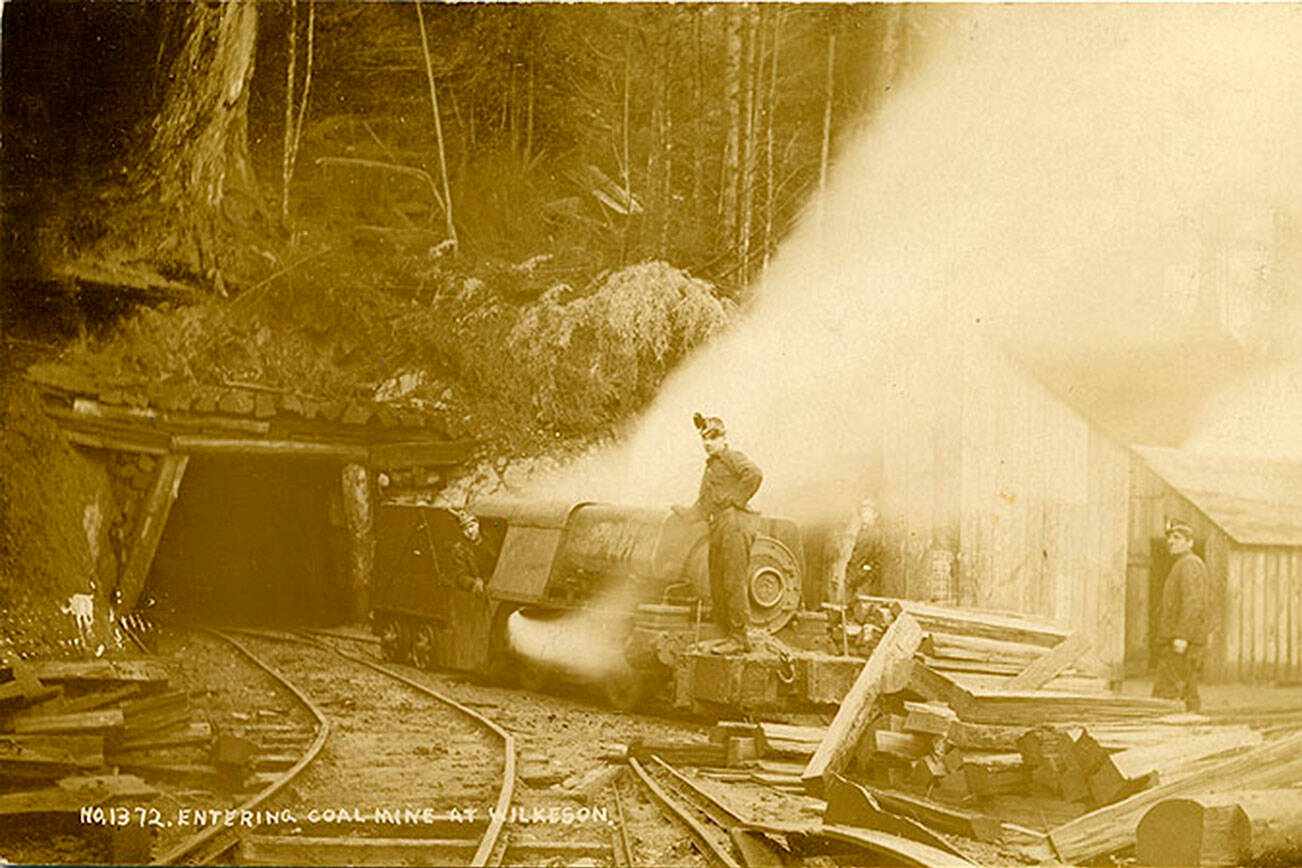The following was written by Wilkeson resident Sara Sutterfield for her regular series, “The Wilkeson Weigh”.
Hopeful to familiarize myself with early Wilkeson history, I’ve reminisced possible scenarios of the small-town during Christmases past.
This month, 1900s era, would the Wilkeson peoples be seen selecting sweet stocking stuffers or Wilkeson-Belle fine cigars from the Angeline & Rees Billiard Hall and Confectionary? Or perhaps finalizing a memorable jewelry sale with the enterprising Frank Kepka?
I think of the relatives back then coming home for the holidays by way of the Northern Pacific Railroad. A stop would have to be made in Tacoma for a change to a passenger train that would spur them over to the Carbon River coal towns.
That journey by track began and ended at the train depot, where the winter season found travelers gathered around the locomotive’s steam engine. The massive machine could radiate a powerful heat mechanically capable of keeping a large congregation warm.
Studying again a collection of historical images, a small steam engine no taller than a man caught my eye.
Captions called the engine a steam “lokey”, a term I had never heard of until reading histories from the area. Was “lokey” a hybrid name created from the words “locomotive” and “steam donkey”? Or maybe the tiny trains simply needed a cute name for their small frame?
I inquired of Ted Curphey, admin for the Facebook group Logging Railroads of the Pacific Northwest, further details about “lokeys” and shared a variety of local images (including Entering Coal Mine of Wilkeson, found in the digital archives of the Washington State Historical Society).
“Looks like a low-profile Porter 0-4-0 used in a mining type operation,” Curphey responded, “[H.K.] Porter [Inc.] locomotives were the most common industrial locomotive of the late 1800’s/early 1900’s, usually in a 0-4-0T configuration.”
The low-profile 0-4-0T configuration meant that the locomotive was short with ZERO leading (front) wheels, FOUR (powered) driving wheels, ZERO trailing (back) wheels and a water TANK saddled over the engine (instead of being pulled behind on a coal-car, or tender).
Speaking of the tight clearance mine trains, Curphey explained the name “lokey” was “a term not found on the mainline railroads often, but far more common on logging and mining operations. These types of underground steam locomotives were only in use for a short period of time before being replaced by electric locomotives, roughly 1880-1910. They had the obvious problem of filling the mine with smoke and trying to suffocate the miners. Mines that used them needed a good ventilation system to provide a large volume of clean air deep in the mine. When the electric mine locomotives became popular, the steam locomotives became surplus and sold cheap to loggers.”
As deadly as the mining steam trains sometimes were, it is nice to think that these squat 0-4-0s were given a second chance.
A photograph ca. 1900 taken in Historic Carbonado shows a “lokey” being used as town muscle, pushing cars of wheat to the Company Store.
The document Washington Coal Company Locomotives, created by John A. Taubeneck, a Seattle resident, catalogues the state’s known train engines from past to present.
For instance, one can follow the timeline of Wilkeson Coal and Coke Company’s #3 engine, also a Porter 0-4-0T steam “lokey”.
Built in November of 1901, the #3 most likely worked the mines or along track atop the coking coal ovens. By 1946, #3 was purchased from Wilkeson for use as an amusement attraction in Puyallup. In 1955, #3 spent a little time in Graham, as well.
The locomotive was converted to a tankless 0-4-0 and sold to the late Ollie Johnston, an animator for Disney. Mr. Johnston ran the once upon a mine “lokey” on the magical Disneyland Railroad and his own private Deer Lake Park and Julian Railroad in California.
Somewhere along the way, she was given the name “Marie E.” and looks quite lovely painted, polished and preserved, as you can see.
Now, the “Marie E.” resides with John Lasseter (former Pixar animator) at the Lasseter Family Winery, where the little lady can chug through the Syrah vineyard along a two-mile, narrow-gauge railroad named the Justi Creek Railway. I can’t think of a more wonderful life.
For me, the holidays, locomotives and community all share the same train of nostalgic thought; themes that have held fast through Wilkeson’s industrial hardship and easy-going celebratory history.
And, true to their low-key nature, the Wilkeson community celebrated their annual Town Hall Tree Lighting two Sundays ago. Bundled-up folk gathered around, each a member of the picturesque Christmas Village. The specially farmed evergreen, a sparkling beacon of cheer in the snow, was decorated with ornaments handmade by the students at the Historic Wilkeson Elementary School. Many of the small-town’s organizations and citizens had volunteered to make the event a joyous occasion for all. Again, I can’t think of a more wonderful life.


